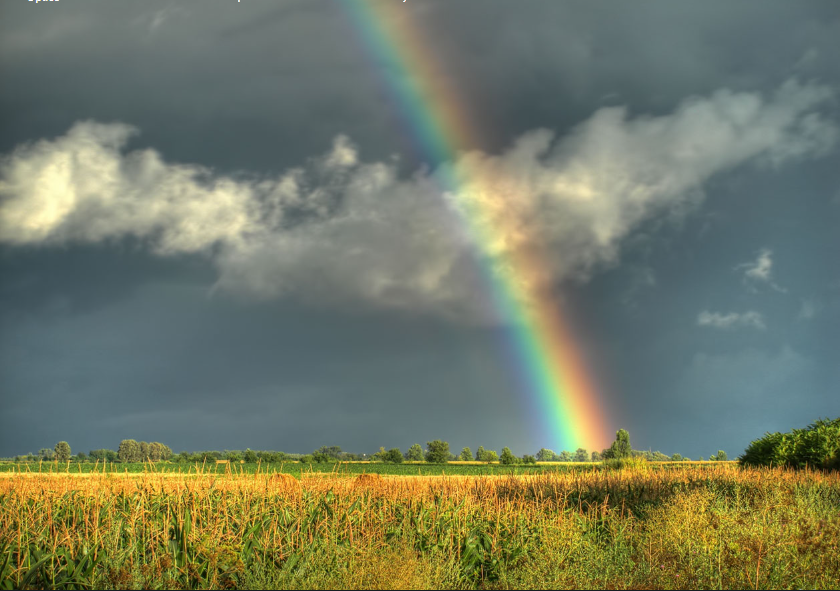OPOD - Primary Rainbow
OPOD - Primary Rainbow: A Marvel of Nature's Optical Display
Rainbows are one of nature's most enchanting and captivating optical phenomena. These mesmerizing arcs of colors have fascinated humans for centuries, inspiring countless myths, legends, and works of art. While we often associate rainbows with rainy days and sunshine, there is much more to these magical displays than meets the eye. In this article, we delve into the captivating world of primary rainbows, exploring their formation, characteristics, and the science behind their awe-inspiring beauty.
What is a Primary Rainbow?
A primary rainbow is the most common type of rainbow that we encounter. It appears as a semi-circular arc of colors, with red on the outer edge and violet on the inner edge. The primary rainbow is created by the refraction and reflection of sunlight within raindrops. When sunlight enters a raindrop, it undergoes both refraction and dispersion. The light rays are bent as they enter the water droplet, then reflect off the inside surface of the droplet, and finally exit the droplet. This bending and reflection cause the white sunlight to split into its constituent colors, creating the vivid spectrum we see in a rainbow.
Formation and Characteristics
Primary rainbows form when sunlight enters raindrops at a specific angle, known as the angle of minimum deviation. This angle is approximately 138 degrees for red light and 137 degrees for violet light. As the light exits the raindrop, it is refracted again and dispersed further. The different colors of light emerge at different angles, resulting in the distinctive arc shape of the primary rainbow.
The size and intensity of a primary rainbow can vary depending on several factors, including the size of the raindrops and the observer's position relative to the sun and rain shower. Generally, primary rainbows have a radius of about 42 degrees centered on a line drawn from the observer's eye to the antisolar point, which is the point opposite the sun in the sky.
The Rainbow's Center and Color Order
The center of a primary rainbow is always located at the antisolar point. This means that the sun must be directly behind the observer for a primary rainbow to be visible. As for the order of colors in a rainbow, red is always on the outer edge, followed by orange, yellow, green, blue, indigo, and violet on the inner edge. This sequence of colors is known as ROYGBIV and represents the visible spectrum of light.
The Wonders of Double Rainbows
Sometimes, if the conditions are just right, a secondary rainbow may appear above the primary rainbow. The secondary rainbow is fainter and has its colors reversed, with violet on the outer edge and red on the inner edge. This reversal occurs because the light undergoes two internal reflections within the raindrop before exiting. The secondary rainbow has a larger radius and is located above the primary rainbow.
Cultural Significance
Rainbows have held cultural significance throughout history and across various cultures. They have been seen as symbols of hope, beauty, and divine intervention. In Greek mythology, for example, rainbows were believed to be a bridge between heaven and earth. In many Native American tribes, rainbows were considered sacred and seen as a pathway for spirits. Today, rainbows continue to inspire awe and wonder in people of all ages and backgrounds.
Photographing Primary Rainbows
Capturing the beauty of a primary rainbow through photography can be a challenging yet rewarding endeavor. To photograph a rainbow effectively, it is essential to consider factors such as lighting conditions, composition, and camera settings. Using a polarizing filter can help reduce glare and enhance the colors of the rainbow. Additionally, positioning yourself at an optimal angle relative to the sun and rain shower can greatly enhance the visibility and vibrancy of the rainbow in your photographs.
In conclusion, primary rainbows are nature's captivating display of optical magic. Understanding the science behind their formation and characteristics adds an extra layer of appreciation for these stunning phenomena. Whether you encounter a primary rainbow on a rainy day or while chasing storms, take a moment to step back and admire the beauty that nature has painted across the sky. It's a reminder of the wonders that surround us and the marvels waiting to be discovered.

Primary Rainbow ~ No explanations for this OPOD. Sometimes it is worthwhile simply to step back and admire. Imaged at Davod, Hungary by Sandor Pocsai. ©Sandor Pocsai, shown with permission.
Note: this article has been automatically converted from the old site and may not appear as intended. You can find the original article here.
Reference Atmospheric Optics
If you use any of the definitions, information, or data presented on Atmospheric Optics, please copy the link or reference below to properly credit us as the reference source. Thank you!
-
<a href="https://atoptics.co.uk/blog/opod-primary-rainbow/">OPOD - Primary Rainbow</a>
-
"OPOD - Primary Rainbow". Atmospheric Optics. Accessed on December 22, 2024. https://atoptics.co.uk/blog/opod-primary-rainbow/.
-
"OPOD - Primary Rainbow". Atmospheric Optics, https://atoptics.co.uk/blog/opod-primary-rainbow/. Accessed 22 December, 2024
-
OPOD - Primary Rainbow. Atmospheric Optics. Retrieved from https://atoptics.co.uk/blog/opod-primary-rainbow/.